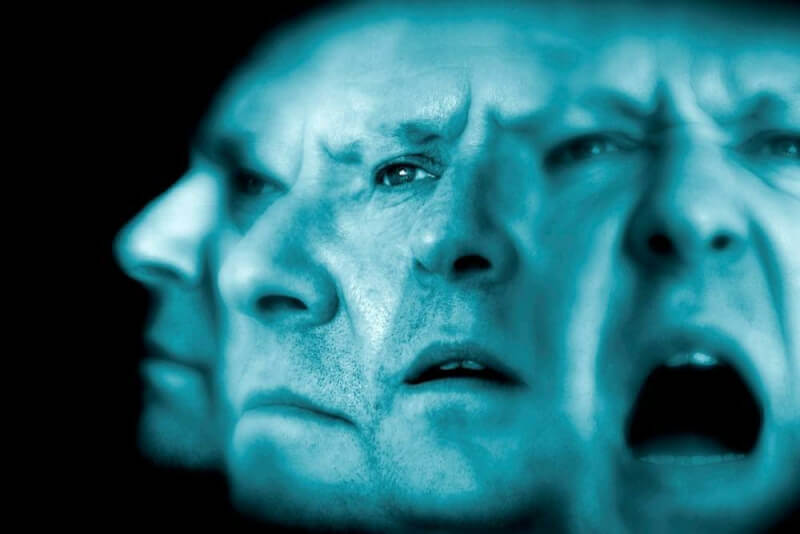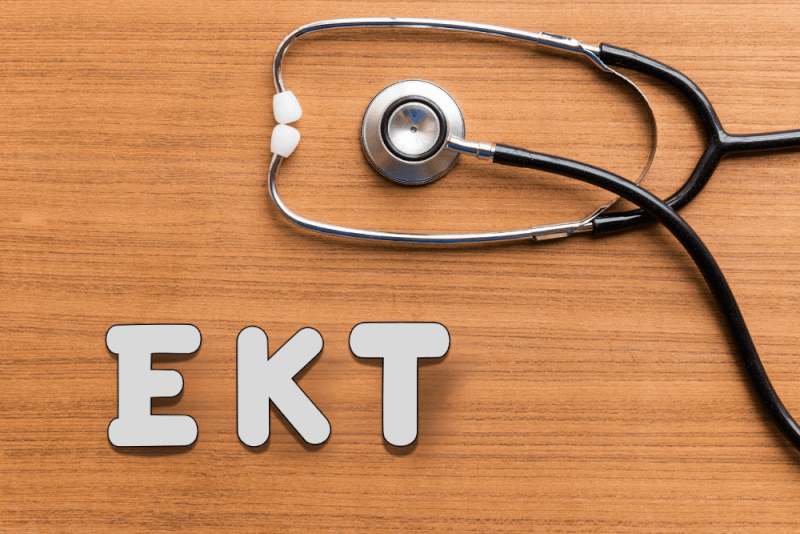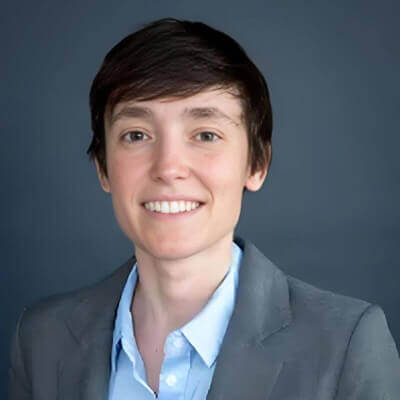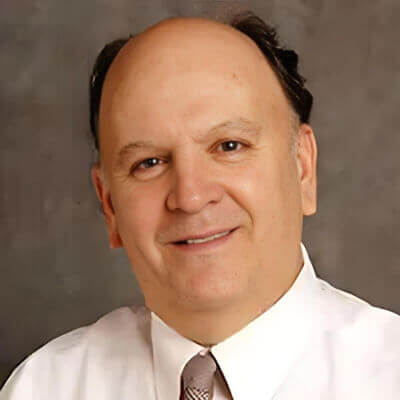30 Second Summary
- It is the inability to distinguish between reality and unreality and the abnormal interpretation of reality.
- It is characterized by symptoms such as hallucinations, delusions, disordered thinking and behavior.
- It is caused by a combination of genetic, environmental and hormonal factors.
- Antipsychotic drugs, psychotherapy and rehabilitation programs are used in treatment.
What is Schizophrenia?
Schizophrenia, one of the mental disorders, is a disease in which patients cannot distinguish between the real and the unreal and interpret reality as abnormal. Schizophrenia is a mental illness so serious that patients are unable to function in daily life. It consists of a combination of disordered thinking, delusions and hallucinations.
There is no cure for schizophrenia, but it can be controlled. For this reason, patients need to continue their treatment for life. Starting treatment at an early stage of the disease has a significant impact on its control. In this way, appropriate steps can be taken to improve the quality of life of patients.
Symptoms of Schizophrenia
Since schizophrenia is a disease that affects patients cognitively, it causes different symptoms in each patient. However, common symptoms include disorganized speech, hallucinations and delusions.
The definition of delusions is beliefs that are not in accordance with reality. Delusions experienced by patients with schizophrenia are usually that they have been harmed. These patients believe that certain movements are always directed towards them. On the other hand, these patients may believe that they are famous or that an unrelated person has fallen in love with them. The majority of people with schizophrenia suffer from delusions.
Hallucinations are the hearing and seeing of things that do not exist in reality. For people with schizophrenia, hallucinations are always real. Within the irregular and abnormal motor behaviors seen in patients, they may show many different behaviors ranging from agitation to childish behaviors.
Negative symptoms of schizophrenia include the inability of patients to lead a normal life. Patients may neglect their personal hygiene or may not change their facial expression and speak in a monotone voice.
Symptoms of schizophrenia can change over time in the same patient. Some symptoms are constant, while others may decrease or increase over time. Symptoms of schizophrenia typically appear in men in their mid-20s and in women in their late 20s. On the other hand, it is very rare for children over the age of 45 and before puberty to be diagnosed.
Suicidal ideation is one of the most common symptoms in patients with schizophrenia. For this reason, if the patient experiences this symptom, it should be ensured that they seek medical attention as soon as possible.
Diagnostic methods for schizophrenia
To make a diagnosis of schizophrenia, other mental health disorders must be excluded and it must be established that the symptoms are not due to substance abuse, medical conditions or medication. For this reason, the following tests and examinations are performed to diagnose schizophrenia.
Schizophrenia test
A schizophrenia test is a test administered by a mental health professional. The criteria in the Diagnostic and Statistical Manual of Mental Disorders (DSM 5) published by the American Psychiatric Association are used.
Schizophrenia physical examination
The reason why people with suspected schizophrenia undergo a physical examination is to rule out other health conditions that may be causing the symptoms. In addition, it is applied to check whether the symptoms seen are the result of any complications related to any health problem.
Psychiatric evaluation
In a psychiatric assessment, mental health professionals check the mood by observing people's appearance and demeanor, asking questions about thoughts, mood, delusions, hallucinations, substance use and potential for violence. They also conduct interviews about family and personal history.
Tests and scans
Imaging studies such as computed tomography and MRI can be performed to identify other physical causes of the symptoms.
Who Has Schizophrenia?
Schizophrenia, which begins to show symptoms at an earlier age in men, also has a more severe course. The biggest cause of schizophrenia is genetic. But there is no single gene that causes schizophrenia. Instead, the disease is caused by a combination of several genes. The more genes that cause schizophrenia in a patient, the more severe the illness.
The characteristics of the patient group in which schizophrenia is seen intensively include being born in winter and spring, the mother's pregnancy period under stress, having an elderly father and living in the city.
What Causes Schizophrenia?
Schizophrenia develops due to many factors. We can list the factors that cause schizophrenia as follows.
- Events that cause trauma,
- Psychotropic and psychoactive drug use in young adulthood and adolescence,
- Enhanced immune system responses,
- Birth complications such as asphyxiation during labor,
- Premature birth or low birth weight,
- Malnutrition in the uterus,
- Exposure to certain viruses,
- Genetic predisposition,
- Drug use,
Types of Schizophrenia
Catatonic Schizophrenia
Catatonic schizophrenia is generally recognized as a form of schizophrenia in which patients are able to recognize changes in their environment but do not react to them. However, some patients with catatonic schizophrenia also show mobility. Characteristics of catatonic schizophrenia include the following:
- Movement disorders are predominant,
- They don't eat or drink,
- They do not talk,
- They don't sleep,
- They do not listen to advice,
- Sometimes there are episodes where they have excessive movement,
- Although they do not react, they are aware of what is happening around them,
- They may be susceptible to suggestion,
Paranoid Schizophrenia
- Self-defense,
- Avoidance of society,
- Angry, harsh and belligerent attitudes,
- Don't overindulge in religion,
- Metaphysical, sexual or philosophical pursuits,
- Disconnects in thinking,
- Incoherent delusions,
- Feistiness,
- Skepticism
- Don't believe that you will see evil,
- Delusions of grandeur,
- It follows a late onset and gradual emergence.
Desorganized (Distributed Type) Schizophrenia
In disorganized schizophrenia, another subtype of schizophrenia, patients' emotional states change rapidly. With this change, patients' thinking becomes primitive. As with other forms of schizophrenia such as delusions. In addition, the most prominent symptoms include repetitive speech and broken sentence structures.
Hebephrenic Schizophrenia
Hbephrenic schizophrenia starts at a young age with positive symptoms. Characteristics of hebephrenic schizophrenia include the following:
- Thought movement disorders are extremely dominant,
- They are very good at emotional manipulation,
- They are superficial,
- Thought disorders are common,
- The disintegration and destruction of the personality happens quickly,
- They are disconnected from the outside world,
- Their behavior is childish and primitive,
- They have different and bizarre gestures, facial expressions and behaviors,
Residual Schizophrenia
The symptoms observed in patients with residual type schizophrenia are as follows:
- Lack of pleasure,
- Decrease in speech and thinking,
- Embodiment
- Apathy,
- Reduced self-care,
- Withdrawal in social relationships,
- Indifference,
- Reluctance
- Reduced action and initiatives,
Differentiated Schizophrenia
Patients with differentiated schizophrenia were diagnosed with schizophrenia. However, it is not classified in any subtype of schizophrenia. They are therefore classified under the diagnosis of differentiated schizophrenia.
Deposit Type Schizophrenia
Patients diagnosed with residual type schizophrenia have experienced at least one episode of schizophrenia in their past, but have continued their normal lives without showing any symptoms afterwards. Among the symptoms experienced by patients in this attack are the following:
- Extraordinary perceptions,
- Bizarre beliefs,
- Mild emotional blunting,
- Wedding
- Slowness
- Reduced eye contact,
- Decreased social performance,
- Decreased self-care,
Schizophrenia treatment methods
Even if the symptoms caused by schizophrenia decrease, patients need to continue their treatment for life. Medications and psychosocial therapy can be used to treat schizophrenia. In some cases, treatment requires hospitalization.
In the treatment of schizophrenia, it is preferable to have a psychologist, a social worker, a psychiatric nurse and a case manager to oversee care, in addition to a psychiatrist with valuable experience in the field. Thanks to the whole team approach, schizophrenia treatment is more effective in clinics.
Schizophrenia drug treatment
In the treatment of schizophrenia, medication is the cornerstone of treatment. Antipsychotic drugs are the most commonly prescribed medications for people with schizophrenia. These drugs are highly effective because they control symptoms by affecting the brain neurotransmitter dopamine.
The aim of treatment with antipsychotic drugs is to manage the symptoms caused by schizophrenia with the lowest possible dose. Psychiatrists therefore prescribe various combinations of medications at different doses and at different times to achieve the goal. In addition to antipsychotic drugs, antidepressants and anti-anxiety medications can also be included in the treatment. The medicines must be used regularly for several weeks to see the first effects.
People with schizophrenia are not always willing to take medication. Patients' willingness to cooperate in treatment affects the choice of medication. Someone who is resistant to taking medication consistently may be given an injection instead of pills.
Second generation antipsychotics
The serious side effects seen in the second generation of antipsychotic drugs are lower than in the first generation antipsychotics. The medicines in this group are as follows.
- Aripiprazole
- Ziprasidone
- Asenapine
- Risperidone
- Brexpiprazole
- Quetiapine
- Cariprazine
- Paliperidone
- Clozapine
- Olanzapine
- Iloperidone
- Lurasidone
First generation antipsychotics
First-generation antipsychotics cause many neurological side effects, including movement disorders, which may or may not be reversible. First-generation antipsychotic drugs, which are preferred because they are more cost-effective than second-generation antipsychotic drugs, include the following.
- Chlorpromazine
- Perphenazine
- Flufenazine
- Haloperidol
Long-acting injectable antipsychotics
Some types of antipsychotic medication can be injected under the skin or into the muscle. These medicines, which are usually given every 2 to 4 weeks, are prescribed especially to patients who have problems with the question of medication use. Among the most common injectable antipsychotics are the following.
- Aripiprazole
- Risperidone
- Flufenazine decanoate
- Paliperidone
- Haloperidol decanoate
Psychosocial treatment of schizophrenia
After the psychosis in schizophrenia patients regresses, psychosocial interventions are required in addition to drug treatment. Psychosocial treatment includes.
Individual therapy
Individual therapy uses techniques to help normalize thought patterns. In addition, patients receive therapy to learn to cope with stress and to recognize early warning signs in case of a relapse of symptoms. In this way, people with schizophrenia can manage their illness.
Social skills training
The therapies are aimed at improving patients' communication and social interaction and increasing their ability to participate in daily activities.
Family therapy
It is a type of therapy that provides support and training to families when a family member has schizophrenia.
Vocational rehabilitation and supported employment
It is a type of rehabilitation focused on helping people with schizophrenia to prepare for, find and keep jobs.
Hospitalization
In times of severe symptoms or crisis, hospitalization may be necessary to protect patients, ensure adequate sleep, proper nutrition and basic hygiene.
Electroconvulsive therapy
Electroconvulsive therapy applied to patients with schizophrenia who do not respond to medication can also be useful for someone who is depressed.
Stages of schizophrenia
Schizophrenia is a disease with different stages. In schizophrenia, which is basically divided into 3 stages, it may take years to overcome the stages.
1. acute phase
In the acute phase of intensive treatment, hospitalization is usually recommended. Although positive symptoms can be seen in this phase, negative symptoms are usually observed.
2. stabilization phase
In the acute phase, the stabilization phase begins with the reduction of positive symptoms. Recovery in the stabilization phase can take longer than 6 months.
3. stable (equilibrium) phase
Patients who reach this stage can completely return to their normal lives. A significant proportion of both negative and positive symptoms disappear. However, while some of the patients in this period have sleep problems, others may experience tension and anxiety.
Is schizophrenia genetic?
Studies have shown that schizophrenia is associated with certain genetic factors. In particular, the presence of schizophrenia or similar mental illnesses in first-degree relatives in the family increases the risk of schizophrenia in the individual. This risk has been determined as follows.
- If either parent has schizophrenia, there is a 12% chance of schizophrenia in the child.
- If both parents have schizophrenia, there is a 40% chance that the child will develop schizophrenia.
- If one non-twin sibling has schizophrenia, there is an 8% chance that the other sibling will also have schizophrenia.
- If one fraternal twin has schizophrenia, there is a 12% chance that the other sibling will develop schizophrenia.
- If one identical twin has schizophrenia, there is a 47% chance that the other sibling will also have schizophrenia.
The difference between psychosis and schizophrenia
Psychosis, a psychological condition that causes people to detach from reality, has many subtypes. Schizophrenia is one of these subtypes. Therefore, while the symptoms in both are similar, schizophrenia also has some specific symptoms.
How should people with schizophrenia be treated?
Relatives of patients with schizophrenia can have a difficult time, especially during the exacerbation period. At this stage, patients' attempts to understand what is happening to them and their failure to put into words the difficulties they are experiencing cause relatives to have a difficult time.
The impaired speech of people with schizophrenia is due to their inability to collect their thoughts or to distinguish between reality and imagination. For this reason, patients need to be given enough time to continue talking comfortably or to answer questions. In addition, patients' irrational speech needs to be listened to and patience needs to be shown.
If families are relaxed and unhurried, patients will feel safer and more comfortable. In addition, if patients become stubborn or argue, their relatives should be aware that they cannot help it.
Patients are often influenced by the disease to defend irrational things or to blame others unfairly. It is important to recognize that patients' thinking systems are distorted, and they are likely to cling to the issues they are advocating for, even if they are illogical.
Deficiencies seen in patients should not be criticized directly and harshly. Concerns about their illness should be allayed with information. At this point, getting help from the physician also makes it easier for the patient's relatives.
The fact that patients are not forced to work on a subject increases their confidence. In addition, if patients do not enjoy activities they previously enjoyed, the underlying causes need to be identified. In this situation, patients need to be encouraged to engage in activities that interest them.
Schizophrenic facial expressions
The blunted face effect is a transdiagnostic component of serious mental illness. It is also associated with a number of negative consequences. On the other hand, facial blunting is a phenomenon that cannot be fully perceived and there is no known cure. The existing literature shows a decrease in positive facial expressions in severe mental illness and an increase in typical and increased negative facial expressions during laboratory tasks.
The blunted face effect is the primary component, which also includes a reduction of facial expressions, voice and gestures. However, blunting of emotions is not only seen in people with schizophrenia but also in depression, neurodegenerative disorders and autism spectrum. The blunt effect on the face is related to poor social and occupational functioning.
Atrophy of facial expression does not necessarily reflect an experiential deficit. However, the mechanisms underlying this condition have not been fully characterized. Besides, understanding the atrophied face effect is an unmet need of schizophrenia.










